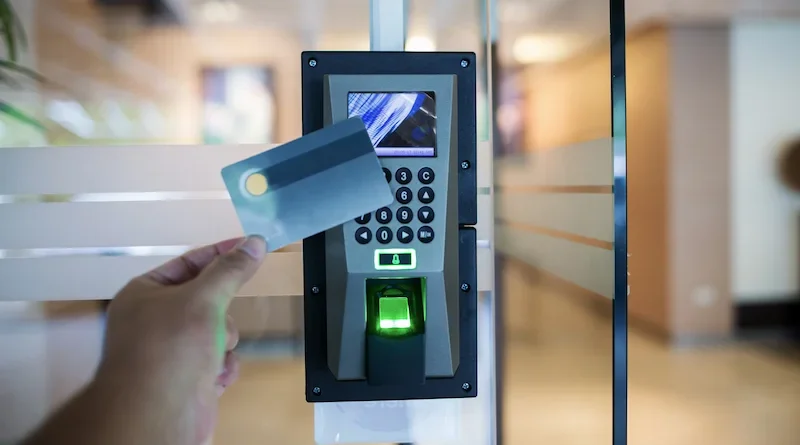Practical Ways to Integrate Modern Access Control Systems in Everyday Life
Overview: Access Control in Daily Life
Access control technology is becoming an integral part of both modern living and working environments. In the past, security was often achieved using simple lock-and-key systems. Still, as the world has grown busier and more complex, these older methods have proven inadequate against both security threats and the demands of daily convenience. The evolution of access control systems has ushered in a new era where technology seamlessly integrates into daily routines, helping people protect what matters while making their lives easier.
Smart AI’s solutions are increasingly being used in various settings, including apartments, offices, schools, and family homes. These systems issue temporary codes for deliveries, manage flexible work schedules, and allow parents to provide unique credentials for children, guests, or service providers. These systems are becoming essential for peace of mind and convenience.
Core Features That Set Modern Systems Apart
- Mobile isn’t lost: Allows users to authenticate entry with smartphones, smartwatches, or tablets. For instance, forgotten keys are no longer an obstacle when a phone can serve as a pass. Mobile credentials can also be updated or revoked remotely, providing flexibility if a device is lost or stolen.
- Cloud-Based Management: Granting or revoking entry can be handled in real-time, which is especially useful for businesses with high staff turnover or for property managers overseeing multiple tenants. The cloud also facilitates easier auditing of access patterns, generating reports, and integration with other business tools.
- Real-Time Alerts: Immediate notifications offer not only security but also valuable insight. For example, homeowners can receive instant alerts when children arrive home, while office managers can quickly detect unauthorized access attempts and respond accordingly, often before an incident escalates.
- Smart Integrations: Modern access control isn’t isolated. Systems can work with video surveillance, alarm systems, lighting, and even thermostats. Imagine unlocking your office in the morning and having all the lights, climate control, and other systems activate in response, providing a seamless, secure, and energy-efficient environment.
Because these systems reduce friction and create new conveniences, they’re quickly outpacing old-fashioned methods. Even in residential homes, the ability to send a temporary code to a visiting friend or lock the doors remotely —since they’re often used to forgetting to do so before leaving—transforms everyday routines.
How Everyday Users Benefit from Access Control
Smart locks and user-friendly access systems have revolutionized home security, eliminating common inconveniences and anxieties. Households can control access with an app, set unique entry schedules, and track who comes and goes without being physically present. Remote unlock capabilities can be a lifesaver in emergencies, allowing trusted neighbors or first responders quick entry. Businesses can also benefit from modern access control strategies, as administrative burdens decrease when a single dashboard replaces physical key management. Access credentials can be updated without rekeying an office or tracking unreturned badges. Temporary contractors can be issued time-limited permissions, and sensitive areas can have additional layers of security managed remotely.
Step-by-Step: Integrating Access Control at Home or Work
- Define Your Objectives: Start by assessing what you hope to achieve. Is your primary concern physical security, ease of guest access, or automating daily routines with smart home integration? Defining your goals will guide your choices through the process.
- Select a Compatible System: Evaluate whether the products you’re considering will work smoothly with your existing WiFi, smart devices, or, in the case of businesses, with other building management systems. Compatibility ensures a smoother implementation and better long-term value.
- Plan Your Installation: For comprehensive coverage, install access points where they matter most—main entrances, garages, and critical internal doors for homes; main entry, sensitive data rooms, and supply closets for businesses. Many residential solutions are designed for DIY installation, while organizations may prefer a specialized installer for peace of mind.
- Configure User Access: Set up unique access codes, mobile credentials, or keycards for each person who requires entry. Scheduled and time-limited entry helps you keep control even when granting access to cleaners, pet sitters, or temporary contractors.
- Train Users: Conduct a walk-through on how to use and troubleshoot the system with all users. Clear, friendly training ensures everyone—from kids to part-time employees—feels comfortable and confident in the new process.
- Test and Adjust: Simulate various access scenarios and conduct emergency drills to verify that your system operates as intended. Review the access logs, make any necessary adjustments, and keep your settings up to date for both security and convenience.
Addressing Privacy and Data Security Concerns
Security in today’s digital age encompasses the digital protection of all data, including that stored on the cloud and mobile devices. Encryption standards and regular updates are crucial; access control providers should offer transparent privacy policies and provide prompt updates. It’s important to update passwords and enable multi-factor authentication when available. Compliance with laws like GDPR or HIPAA is crucial for organizations. At home, using strong passwords and keeping credentials private can help maximize your privacy. Regularly reviewing permissions and system settings helps prevent both physical and virtual intrusions.
The Future: Scalability and Integration Potential
Access control is rapidly evolving, with biometric entry becoming more common than smartphone credentials. Machine learning and AI are enabling predictive security by identifying unusual behavior patterns. Integration is also expanding, with doors unlocking as you approach and the environment adjusting to your preferences. Modular and scalable solutions allow homes and businesses to add new features without costly overhauls, ensuring a secure and personalized access control system.
Visit the rest of the site for more interesting and useful articles.

